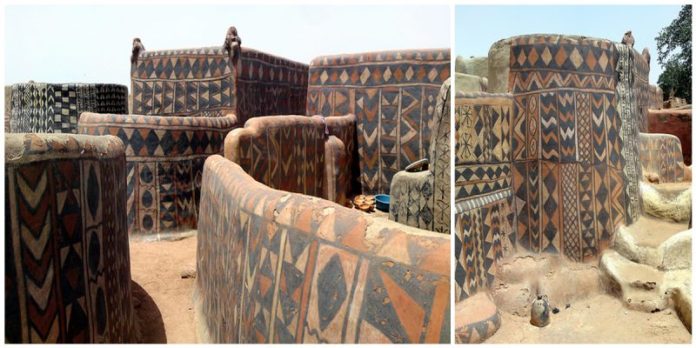In the south of Burkina Faso, a landlocked country in West Africa, near the border with Ghana lies a small, circular village of about 1.2 hectares, called Tiebele. This is home of the Kassena people, one of the oldest ethnic groups that had settled in the territory of Burkina Faso in the 15th century. Tiebele is known for their amazing traditional Gourounsi architecture and elaborately decorated walls of their homes.

Burkina Faso is a poor country, even by West African standards, and possibly the poorest in the world. But they are culturally rich, and decorating the walls of their buildings is an important part of their cultural legacy in this area of the country. Wall decorating is always a community project done by the women and it’s a very ancient practice that dates from the sixteenth century AD.

The Kassena people build their houses entirely of local materials: earth, wood and straw. Soil mixed with straw and cow dung is moistened to a state of perfect plasticity, to shape almost vertical surfaces. Today this technique is replaced by the use of mud brick molding walls with foundations resting on large stone. Tiebele’s houses are built with defense in mind, whether that be against the climate or potential enemies.


Walls are over a foot thick and the homes are designed without windows exceptor a small opening or two to let just enough light in to see. Front doors are only about tw fo feet tall, which keeps the sun out and makes enemies difficult to strike. Roofs are protected with wood ladders that are easily retracted and the local beer (dolo) is brewed at home.

After construction, the woman makes murals on the walls using colored mud and white chalk. The motifs and symbols are either taken from everyday life, or from religion and belief. The finished wall is then carefully burnished with stones, each color burnished separately so that the colors don’t blur together. Finally, the entire surface is coated with a natural varnish made by boiling pods of nere, the African locust bean tree.

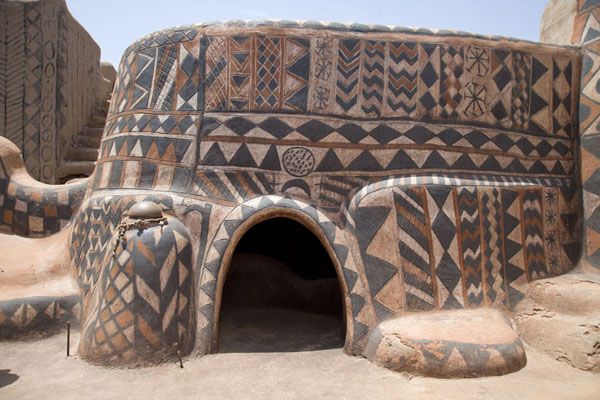
The designs also serves to protect the walls themselves. The decorating is usually done just before the rainy season and protects the outside walls from the rain. Adding cow dung, compacting layers of mud, burnishing the final layer, and varnishing with nere all make the designs withstand wet weather, enabling the structures to last longer.
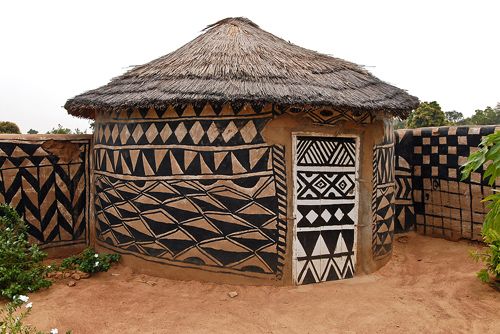
The houses are ornamented with incredibly precise and delicate folklore patterns and each painted house has many different geometrical and illustrative drawings. Wall decorating is always done by the Gurunsi women and it’s very ancient practice that dates from the sixteenth century AD. The colors used are black, white and red, made using local natural materials such as clay, kaolin, and coal..
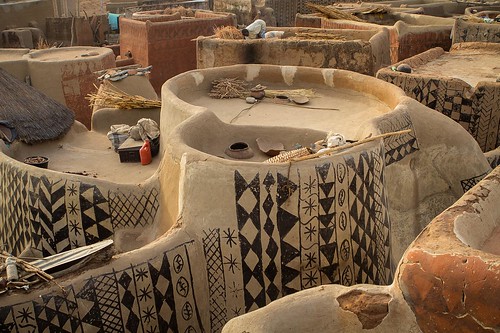 Tiebele’s houses are built with defense in mind, whether that is against the climate or potential enemies. The doors are small to offer protection and there are barely any windows.
Tiebele’s houses are built with defense in mind, whether that is against the climate or potential enemies. The doors are small to offer protection and there are barely any windows.
The women crush different colored stones to mix with water and clay to use as paint. Source
The women crush different colored stones to mix with water and clay to use as paint.
 African architecture is close to nature. The construction is made with abundant resources found on the site that can be re-applied endlessly. After a house is built, the person that is going to live in it first waits for two days, and if a lizard walks in the house it is considered a good house; if not, the house is destroyed.
African architecture is close to nature. The construction is made with abundant resources found on the site that can be re-applied endlessly. After a house is built, the person that is going to live in it first waits for two days, and if a lizard walks in the house it is considered a good house; if not, the house is destroyed.
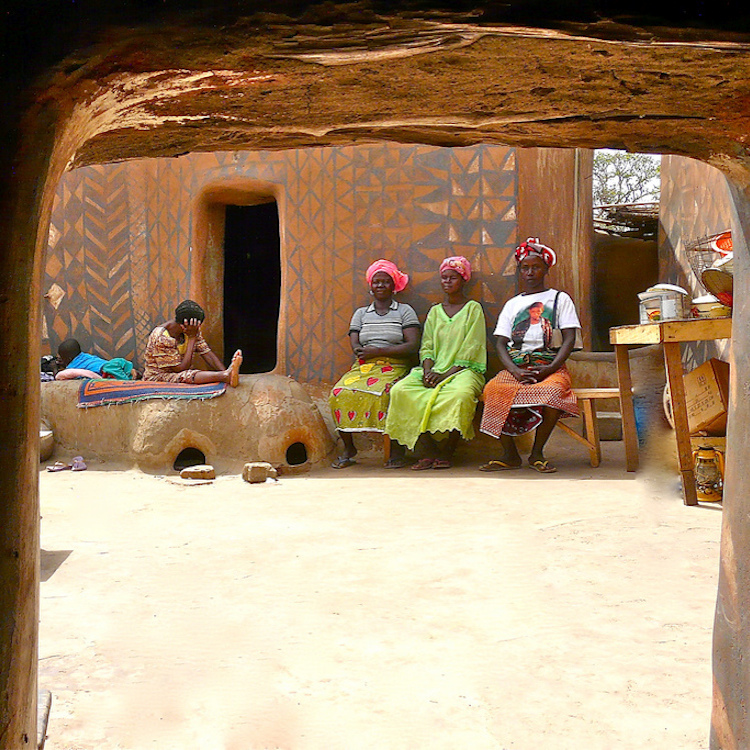 The motifs can illustrate just about anything from objects to religion and beliefs. Source
The motifs can illustrate just about anything from objects to religion and beliefs. Source
The motifs can illustrate just about anything from objects to religion and beliefs.
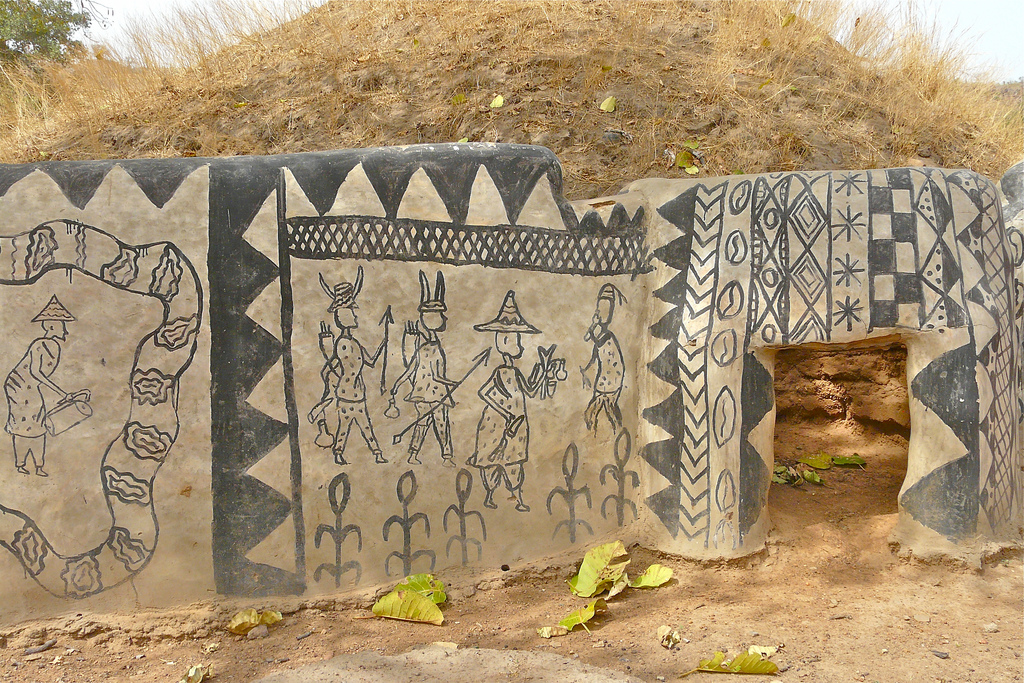

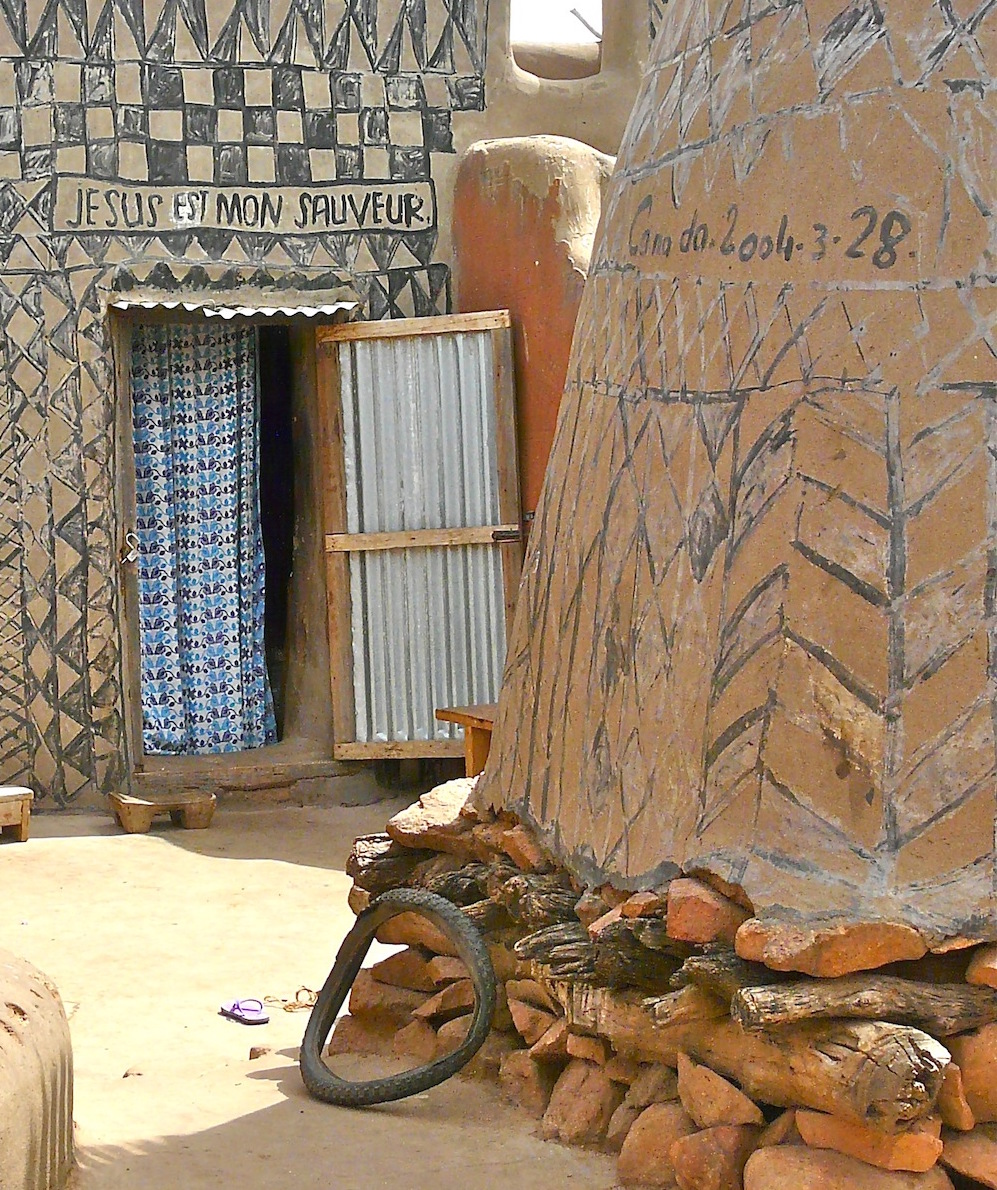
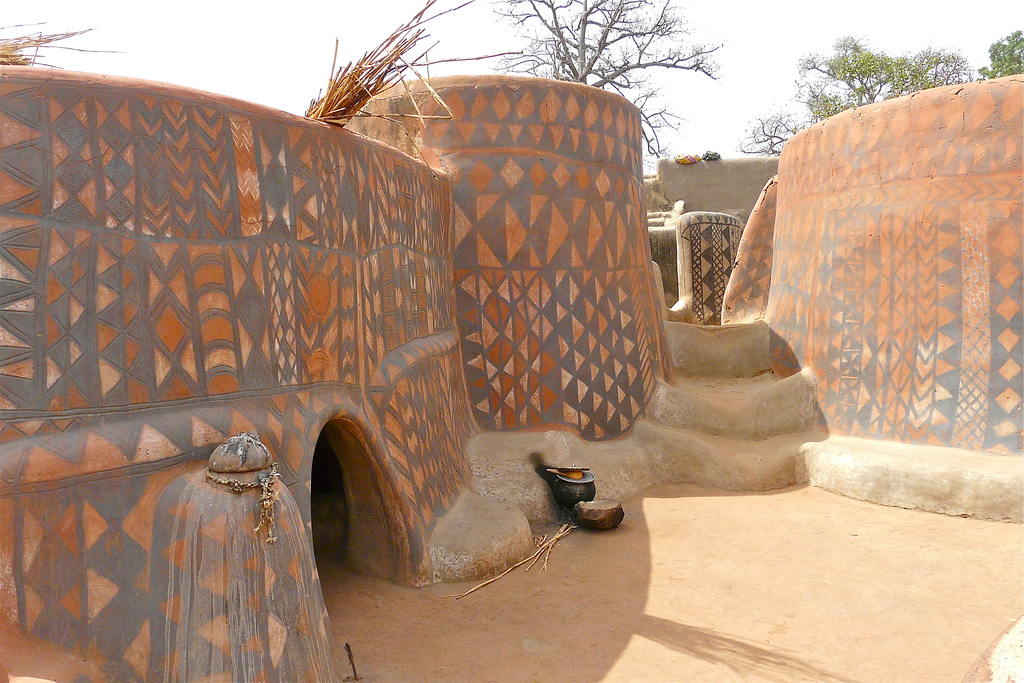 The small village faces challenges to sustain the integrity of its structures. There is an interest in developing the site as a cultural tourism destination to generate economic resources for conservation.
The small village faces challenges to sustain the integrity of its structures. There is an interest in developing the site as a cultural tourism destination to generate economic resources for conservation.































